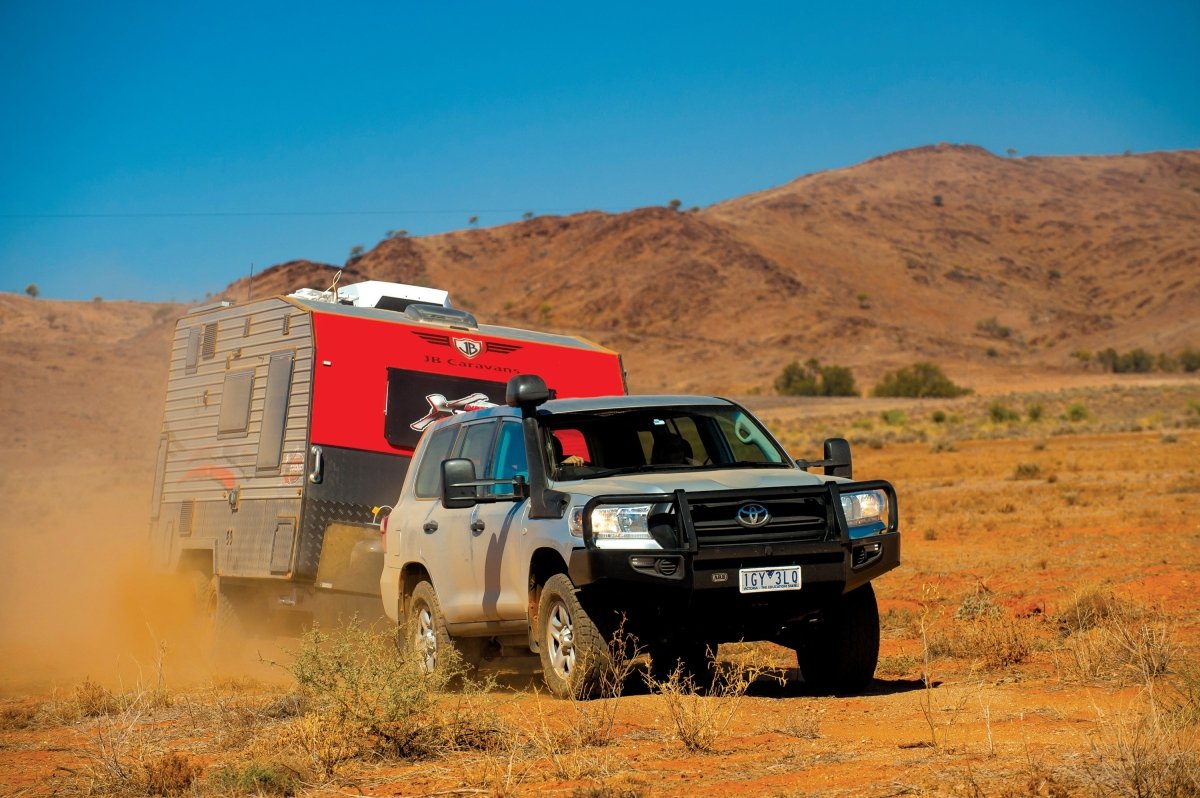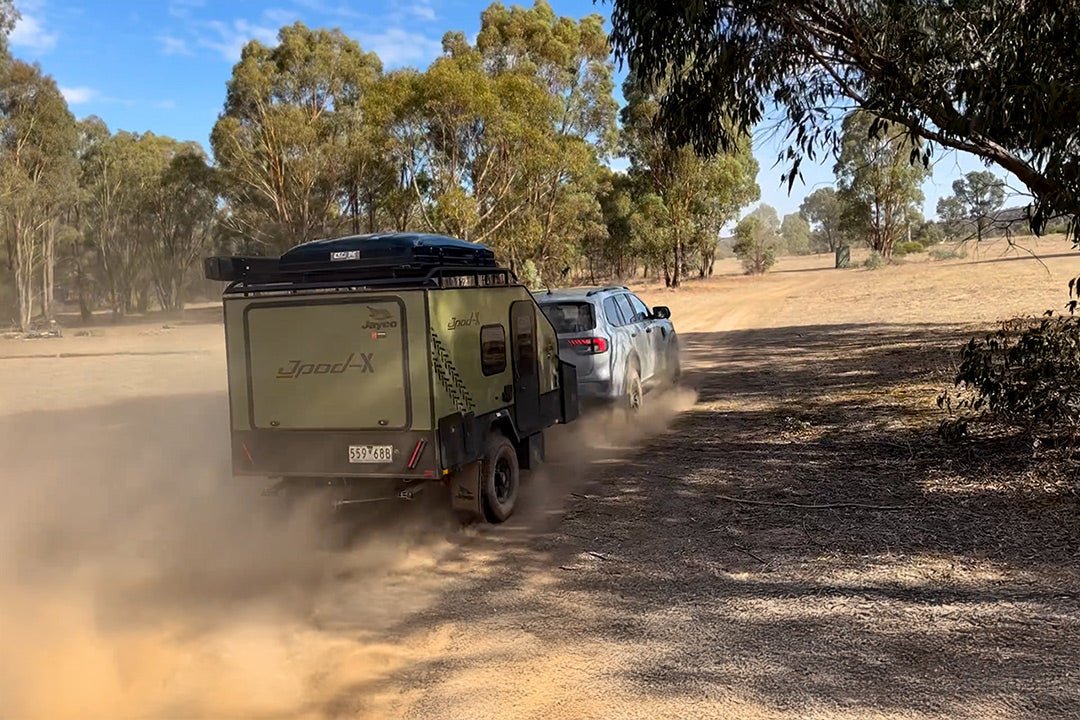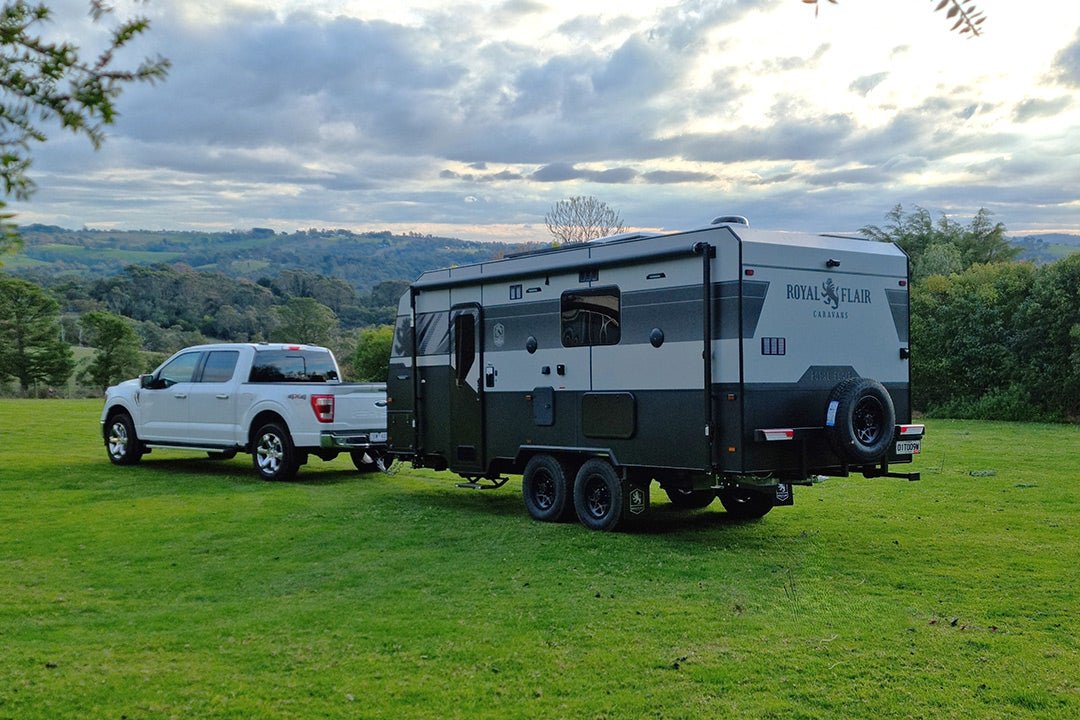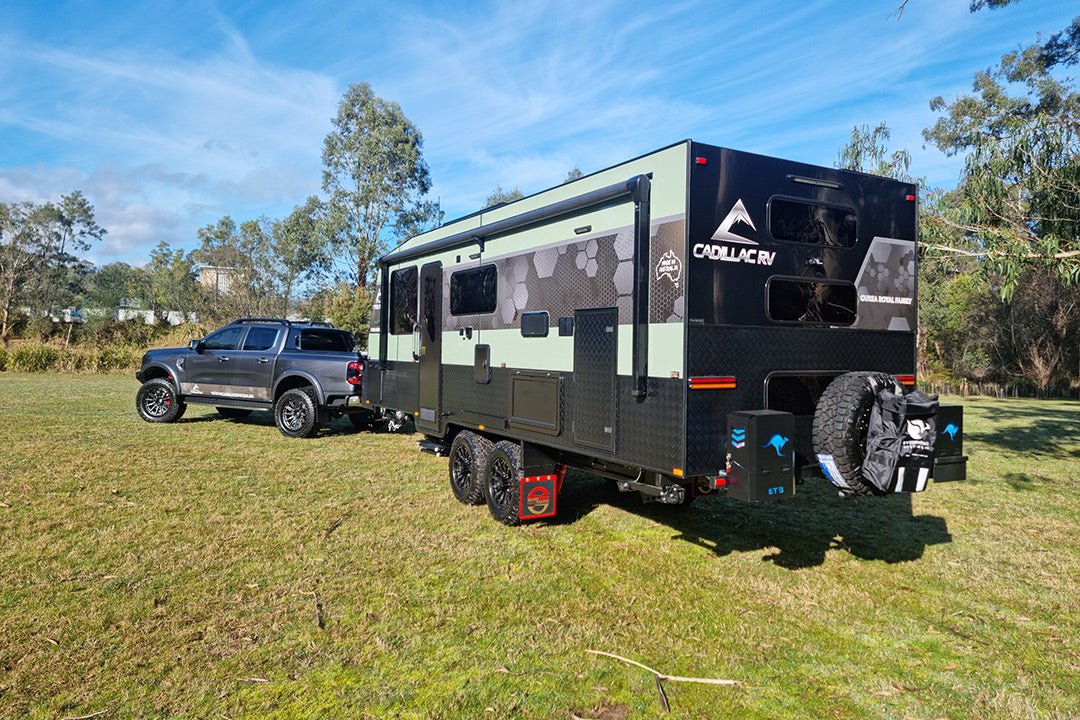Tow vehicle test

Tow vehicles seem to be both an increasing subject of conversation within various magazines and on social media, and an increasing subject of confusion. It's because caravan weights are getting heavier but also because a number of tow vehicle manufacturers are supplying maximum towball mass/tow rating/GCM (Gross Combined Mass) figures where a bit of simple mathematics has to be applied. Any one figure cannot be considered in isolation.
The good news is that whereas once upon a time the Toyota LandCruiser was considered the default tow vehicle for every caravanner, these days there's a good selection of vehicles available for all ranges, even in a few cases above the magic 3500kg limit.
On any tow vehicle, the maximum tow rating is an important figure — the loaded weight of the caravan can never exceed that. However, quite a few tow vehicle manufacturers are specifying a GCM, which is the total loaded weight of both the tow vehicle and caravan. There are quite a few examples where if the loaded weight of the caravan is subtracted from the GCM, then the tow vehicle has a payload of something like 200kg. Not very realistic.
For any tow vehicle, it’s essential to understand how both the tow vehicle and caravan can be loaded. Keep that in mind when considering any of the following tow vehicles, starting with the industry favourite. Note that kerb weight can vary between different models in the same range and it does not usually include any after-market accessories that are often essential, for instance a towbar or bullbar. These are not exactly lightweight items.
Toyota LandCruiser 200 GX
Certainly Toyota’s 200 Series LandCruiser has achieved almost legendary status amongst the caravanning fraternity of Australia. It’s a solid tow vehicle and one that has demonstrated its abilities as a strong one, too. Comfort is also a factor — anyone who doubts that can have a spin in the similarly spec’d 70 Series. Whilst just as capable, it’s a little more pitched at being a working vehicle. The 200 Series is available with both petrol and diesel engines.
However, for towing purposes it’s the torque that matters.
Whilst the 4.6L petrol engine offers more power, 227kW versus the 200kW of the diesel 4.5L turbodiesel, the maxi 650Nm of the latter compared to the petrol’s 439Nm is a clear winner. Both the petrol and diesel versions come with a very smooth eight-speed automatic gearbox.
Taking a look at the towing specs, the Cruiser has a maximum tow rating of 3500kg, a kerb mass of 2640kg and a GCM of 6850kg. For the purpose of this and similar calculations, I’ll ignore the towball mass as a separate figure — it will be included in the overall weight of the caravan.
Let’s say we have a caravan that weighs 3500kg fully loaded. Subtracting that from the GCM of 6850kg leaves 3350kg and subtracting the kerb mass of 2640kg from that, results in a payload of 710kg which is quite a respectable figure.
Engine 4.5L turbodiesel, 200kW@3600rpm, 650Nm@1600-2600rpm
Transmission Six-speed automatic
Towing capacity 3500kg
GCM 6850kg
Kerb weight 2640kg
RAM 1500 Laramie
Large US pick-up trucks are a novelty in Australia, not being readily available in right-hand drive. However, a few specialist converters have begun to import a few models and complete the right-hand conversion in Australia.
One such model is the RAM 1500 imported into Australia by American Special Vehicles, a division of Ateco. The RAM 1500 has a very typical US look about it but anyone familiar with the US truck scene might note that in the USA there is a later model available.
However, the superseded model is still being built and this is what we have in Australia in the foreseeable future. There are two 1500 models available, the Express and the Laramie, the latter being more up-specc’d.
Both are petrol engine powered only, a 5.7L V8 that delivers a maximum of 291kW of power and a torque of 556Nm. Diesel lovers will have to wait a while for an oil burner.
The RAM comes with a maximum tow rating of either 3500kg or 4500kg, depending on the ball size and the axle ratio and the GCM is adjusted accordingly; 6216kg or 7237kg.
Just before you get dazzled by the 4500kg tow rating, a quick calculation might suggest caution is required. Subtracting 4500kg from the GCM of 7237kg leaves 2737kg. Taking the kerb weight of 2650kg from that and you have a payload of just 87kg and the figures for the 3500kg tow rating don’t look much better.
Engine 5.7L Hemi V8, 291kW@5600rpm, 556Nm@3950rpm
Transmission Eight-speed automatic
Towing capacity 3500kg (50mm ball, axle ratio 3.21)
Towing capacity 4500kg (70mm ball, axle ratio 3.92)
GCM 6261kg (axle ratio, 3.92)
GCM 7237kg (axle ratio, 3.21)
Kerb weight 2650kg
Isuzu D-Max SX Crew Cab ute
In many ways, the Isuzu D-Max ute is typical of a good range of vehicles in this same genre — Ford Ranger, Toyota Hilux, Holden Colorado, Mazda BT-50, Mercedes Benz X — Class and Nissan Navara. All have similar towing specifications.
Like all the utes, the Isuzu D-Max is an excellent choice of tow vehicle, mostly because it is practical on a number of levels, readily available in Australia and not difficult to set up for towing.
Although the maximum tow rating is similar to that of the Toyota LandCruiser, the Isuzu D-Max is cheaper and weighs less. That might sound like two advantages in one but the lack of tow vehicle weight can be a disadvantage in certain situations.
An advantage of something like the Isuzu D-Max is that it’s a multi-purpose vehicle — it can be used for transporting four people easily and has load carrying space in the rear as well.
The crunch factor with the D-Max, like all utes with a GCM of circa 6000kg is that the 3500kg towing capacity really is operating close to the margins.
Doing the maths, GCM 5950kg minus 3500kg gives 2450kg. Taking the kerb weight 1960kg away leaves a payload of 490kg, which does allow for items such as a towbar, bullbar, driving lights and passengers.
Engine 3.0L turbodiesel, 130kW@3600rpm; 430Nm@2000-2200rpm
Transmission Six-speed auto
Towing capacity 3500kg
GCM 5950kg
Kerb weight 1960kg
Holden Trailblazer LT
Holden’s Trailblazer, formerly known as the Colorado is similar to Ford’s Everest in that it’s ideal for a family vehicle and therefore doubles as both a tow vehicle and an around-town transport. It’s a bigger version of Holden’s Captiva but has a larger towing capacity apart from anything else. Just as an aside here, I know many people get a bit fixated with operating right on the limit of some tow vehicle specifications, and indeed there’s not much choice when you get to around 3500kg. However, I reckon there are some benefits of having a bit of slack in the capacity — it's not so hard on both the tow vehicle and driver. The Trailblazer has the option of seven seats or, unlike the utes, a secure enclosed rear storage area.
Doing the weight calculations, subtracting both the 3000kg towing capacity and the 2194kg kerb mass from the 5700kg; leaves a vehicle payload of 506kg.
Engine 2.8L turbodiesel, 147kW@3600rpm, 500Nm@2000rpm
Transmission Six speed automatic
Towing capacity 3000kg
GCM 5700kg
Kerb weight 2194kg







